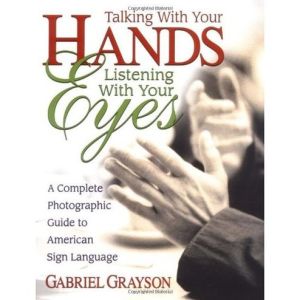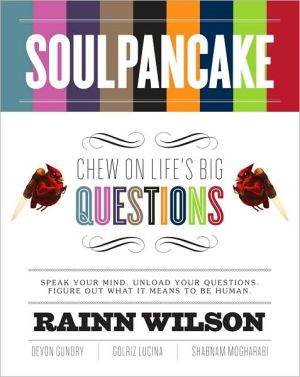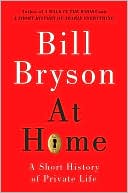Talking With Your Hands, Listening With
After English and Spanish, it is the third most common language in North America. Over 22 million people use it to communicate. It has its own beauty, its own unmistakable form, and its own inherent culture. It is American Sign Language (ASL), the language of the deaf.\ Gabriel Grayson has put together a book that makes signing accessible, easy, and fun. Using almost 1,400 photographs, he has created a comprehensive primer to the techniques, words,\ and phrases of signing. Each word or phrase...
Search in google:
It is the third most commonly used language in North America. It has its own beauty, its own unmistakable form, and its own inherent culture. It is American Sign, the language of the deaf. Now, Gabriel Grayson, teacher extraordinaire, has put together a book that makes signing accessible, easy, and fun. Using over 800 photographs, he has created a comprehensive primer to the techniques, words, and phrases of signing. Each word is accompanied by a photo or series of photos that show hand, face, and body expressions. And along with each image is text that details every movement. The book begins by looking at the history and nature of both the language and the deaf community. Next, it explains the basics of signing, including the alphabet, numbers, physical movements, and facial expressions. The balance of the book provides a complete guide to words in sign language. Throughout the book, the author has included informative insets that focus on fascinating aspects of deaf history, culture, language, and trivia. Inset topics include how sign language got its start in baseball; how signing differs around the world; how criminal courts handle deaf defendants; and much more. Although Gabriel Grayson can hear, he is uniquely qualified to have authored this book. Born to parents who were both totally deaf, Grayson's first means of trained communication was sign language. The inspirational story of his childhood was first the subject of a published article, and then the basis for a moving ABC made-for-television movie. Professor Grayson is the chairperson of the Department of Sign Language at New School University in New York City. In addition, he is a principal court-appointed sign language interpreter for the NYC judicial system. As such, he has been involved in over 1,000 criminal cases as an advocate and interpreter. Gabriel Grayson also conducts sign language tours at the American Museum of Natural History for adults. Publishers Weekly Grayson, chair of the New School University's department of sign language, created this massive reference in the hopes of "making it easier to understand, duplicate and remember the vocabulary" of American Sign Language, which is used by an estimated 500,000 deaf people in the U.S. and Canada. Grayson can hear, but was born to parents who were both deaf, and his first means of trained communication was sign language. The book covers more than 900 signs that represent nearly 1,800 words and phrases, with signs grouped by topic, e.g., common and polite phrases; mealtime and food; school and education; careers, jobs and the workplace;and the body and health. One or more photos of professional signers demonstrating the sign formation accompany a discussion of each sign. Grayson provides instructions for each word, explaining the hand shape, the position in front of the body where the sign is made and the type of movement involved in expressing the word. Perhaps most useful is the "visualize" portion of each entry, which often explains the essence of the sign. For example, when signing the word "farmer," which involves moving one's hand across the chin and then down the chest, visualize yourself depicting "the bushy beard of a farmer." Although the photos are on the small side (about two inches square), Grayson's instructions are detailed and clearly written. Especially valuable are the educational sidebars on what it's like to live as a deaf person in the U.S., including a suggested reading list on the history of deaf culture, a discussion of how technology has created more career options for deaf people and a list of American films featuring deaf protagonists. Index. (Feb.)
Contents Acknowledgments Preface How to Use This Book Introduction 1. The Basics 2. People, Relationships, and Pronouns 3. Actions 4. Home and Clothing 5. Food and Mealtime 6. Time and Days of the Week 7. Numbers, Money, and Quantity 8. Seasons, Nature, and Animals 9. School and Education 10. Careers and the Workplace 11. Sports and Leisure 12. Travel, Location, and Direction 13. Cities, States, Countries, and Governments 14. The Body and Health 15. Thoughts and Feelings 16. Religion 17. Descriptions 18. Conversation and Common Phrases Index
\ Starred Review Booklist"The format and content of Grayson's guide totally demystify the process of learning sign language...Grayson's vast experience as a sign language teacher...shines forth in this outstanding book...[an] invaluable resource."\ \ \ \ \ Publishers WeeklyGrayson, chair of the New School University's department of sign language, created this massive reference in the hopes of "making it easier to understand, duplicate and remember the vocabulary" of American Sign Language, which is used by an estimated 500,000 deaf people in the U.S. and Canada. Grayson can hear, but was born to parents who were both deaf, and his first means of trained communication was sign language. The book covers more than 900 signs that represent nearly 1,800 words and phrases, with signs grouped by topic, e.g., common and polite phrases; mealtime and food; school and education; careers, jobs and the workplace;and the body and health. One or more photos of professional signers demonstrating the sign formation accompany a discussion of each sign. Grayson provides instructions for each word, explaining the hand shape, the position in front of the body where the sign is made and the type of movement involved in expressing the word. Perhaps most useful is the "visualize" portion of each entry, which often explains the essence of the sign. For example, when signing the word "farmer," which involves moving one's hand across the chin and then down the chest, visualize yourself depicting "the bushy beard of a farmer." Although the photos are on the small side (about two inches square), Grayson's instructions are detailed and clearly written. Especially valuable are the educational sidebars on what it's like to live as a deaf person in the U.S., including a suggested reading list on the history of deaf culture, a discussion of how technology has created more career options for deaf people and a list of American films featuring deaf protagonists. Index. (Feb.)\ \ \ Library JournalGrayson, who is hearing but was born to deaf parents, is currently chair of the sign language department at the New School in New York City and a leading interpreter in the area. His first book is a fine and unique addition to the American Sign Language (ASL) field, featuring photographs instead of drawings; visualization tips to recall signs; fantastic tidbits, trivia, and cultural/ historical references; and an index that pairs words with their opposites. Like other similar works, such as The American Sign Language Handshape Dictionary, Grayson includes an introduction to ASL and deaf culture in the United States. The signs (900 compared with the 1600 signs in the aforementioned title) are organized by topic, and the format of the book is clear and uncramped. Although this volume is being marketed as a complete guide, even the author writes that it is "not meant to be an exhaustive dictionary" and is more suitable for circulation. Buy an ASL dictionary for the reference shelf, but do consider this excellent work for your public library language collection.-Andy Wickens, King Cty. Lib. Syst., WA Copyright 2003 Reed Business Information.\ \ \ \ \ School Library JournalAdult/High School-An outstanding, user-friendly resource for those interested in learning ASL. Signs are grouped into chapters based on their meanings. The meanings and synonyms are in large, blue print; descriptions of the hand shape, position, and movement are set in smaller, black type. One or two black-and-white, 2" x 2" photographs of the entire torso show the beginning and end of a sign; superimposed arrows indicate additional movement. These pictures are clear enough for new signers to follow. Additional photos at the bottom of the page show only hand shapes, making clear what might not be visible due to the angle of the primary illustrations. Signers shown represent diverse cultural backgrounds. The index enables readers to locate both the desired sign and its antonym. Throughout, boxed inserts present thorough, insightful articles on such subjects relating to deaf culture as medical conditions and assistive technology. This information alone makes the book a wonderful resource.-Claudia Moore, W. T. Woodson High School, Fairfax, VA Copyright 2003 Reed Business Information.\ \








